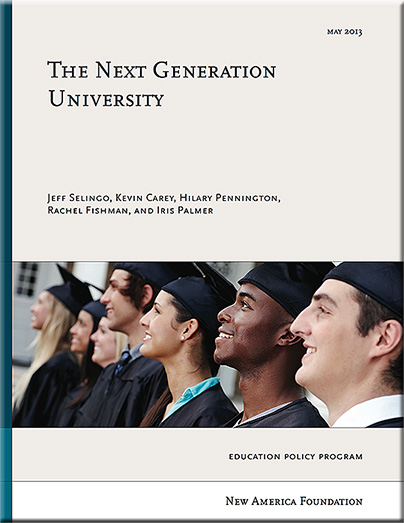.
Excerpt:
As the nation struggles to find new ways to increase college access and completion rates while lowering costs, a handful of “Next Generation Universities” are embracing key strategies that make them models for national reform. The report The Next Generation University comes at a time when too many public universities are failing to respond to the nation’s higher education crisis. Rather than expanding enrollment and focusing limited dollars on the neediest of students, many institutions are instead restricting enrollments and encouraging the use of student-aid dollars on merit awards. But, according to the report, some schools are breaking the mold by boldly restructuring operating costs and creating clear, accelerated pathways for students.
…
Download the full report here.
.
In addition to the report, see:
- Technology and the Next Generation University, New America’s Rachel Fishman explores the barriers to technology-enhanced education and presents promising practices Next Generation Universities employ to overcome them.
. - In Formation of the Next Generation University: Role of State and System Policy, HCM Strategists’ Iris Palmer, Kristin Conklin, and Nate Johnson explore how transfer policy, financial aid, net price, performance funding and the K-12 pipeline affect Next Generation Universities within their state context. It makes recommendations for state and higher-education system policymakers on how to ensure public institutions are meeting the needs of the state.
. - HCM Strategists, in conjunction with the release of The Next Generation University developed a new interactive tool: Next Generation Universities: Select Dimensions of Research University Output, Productivity and Efficiency 2006-2011
Also see:
- What happens when 2 colleges become one — from chronicle.com by Ricardo Azziz
Excerpt:
Earlier this year, Moody’s Investors Service released its annual assessment of higher education in the United States, a report that viewed the sector’s short-term outlook as largely negative amid growing economic pressures. The analysts, however, applauded the efforts of a few states that were trying to merge or consolidate campuses because such efforts “foster operating efficiencies and reduce costs amid declining state support.”









